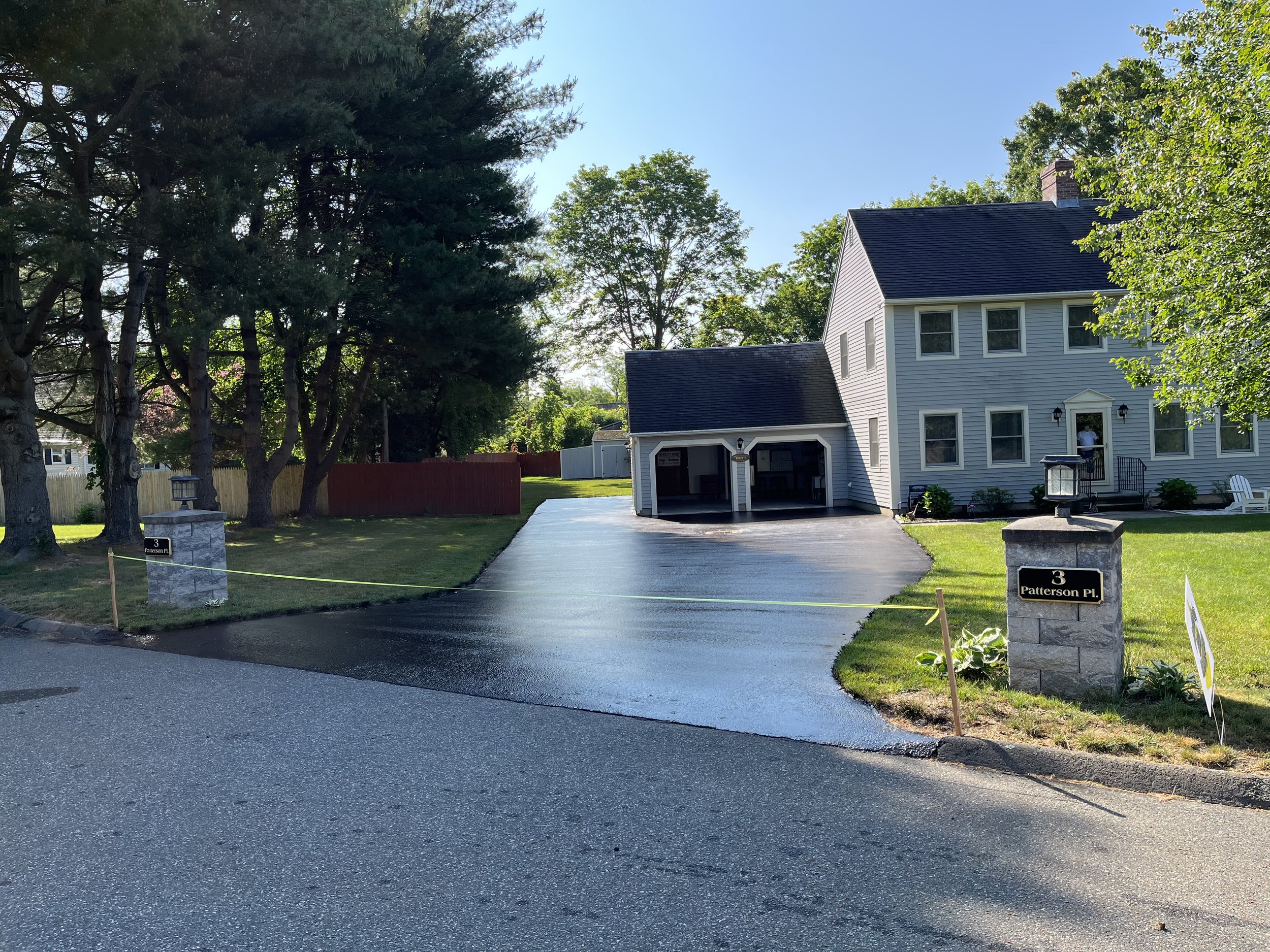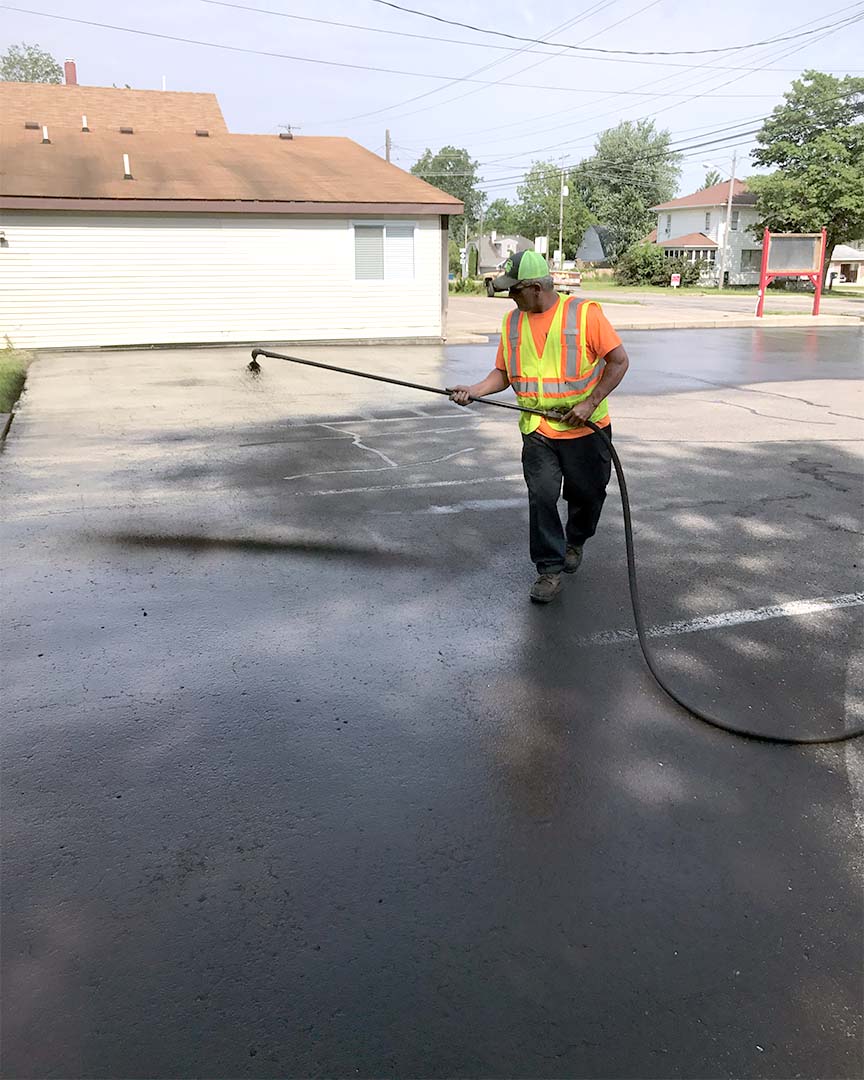Maximize Resilience: Hot Mix Asphalt Sealing for Angled Parking Frameworks
Maximize Resilience: Hot Mix Asphalt Sealing for Angled Parking Frameworks
Blog Article
Warm Mix Asphalt: A Sustainable Remedy for Pavement
Warm Mix Asphalt (HMA) has actually arised as a leading lasting option for sidewalk options, supplying a myriad of ingenious innovations and environmental advantages. Its capacity to reuse products and reduce power consumption presents an engaging instance for its fostering in roadway building and construction jobs. Furthermore, the lasting performance and toughness of HMA make it a recommended option for facilities growth. As the demand for eco-friendly construction methods expands, checking out the nuances of HMA's sustainability can offer beneficial understandings into the future of pavement remedies.
Ecological Advantages of Warm Mix Asphalt

Furthermore, Warm Mix Asphalt assists to mitigate metropolitan heat island results. Its dark color takes in sunshine, minimizing the quantity of heat mirrored back into the atmosphere contrasted to lighter-colored pavements. This can reduce ambient temperature levels in urban areas, reducing the need for air conditioning and eventually lowering energy usage.
Additionally, Warm Mix Asphalt adds to boosted stormwater management. Its porous nature enables water to reenergize and infiltrate the sidewalk groundwater materials, minimizing runoff and the danger of flooding. These environmental benefits make Hot Mix Asphalt a sustainable choice for paving freeways and roadways.
Power Efficiency in HMA Production
Is power efficiency an essential element in the manufacturing of Warm Mix Asphalt (HMA)? Absolutely. Power plays a significant function in the production of HMA, impacting both expense and ecological sustainability. One key element of power efficiency in HMA manufacturing is using cozy mix asphalt (WMA) innovations (regrading). WMA permits the blending and placement of asphalt at lower temperatures contrasted to typical warm mix asphalt, causing lowered energy usage throughout production. This procedure not only lowers fuel usage however additionally decreases greenhouse gas discharges, making it an extra eco-friendly alternative.
In addition, innovations in plant modern technologies have caused more energy-efficient HMA production procedures. Modern plants are developed with features like recycled asphalt sidewalk (RAP) processing capacities, efficient heater systems, and enhanced insulation, all adding to energy savings. By optimizing energy use in HMA production, the sector can decrease its carbon footprint while preserving high-grade sidewalk materials. Power efficiency is, consequently, an important factor to consider in making sure the sustainability of Warm Mix Asphalt manufacturing.
Recyclability of Warm Mix Asphalt
The recyclability of Hot Mix Asphalt (HMA) is a crucial element of its sustainability and long-lasting environmental effect. HMA is among the most recycled products in the United States, with over 100 million lots of redeemed asphalt pavement (RAP) being recycled each year in new pavement building and construction. Reusing HMA offers numerous environmental advantages, such as minimizing the need for virgin products, lowering power usage throughout manufacturing, and reducing the quantity of waste sent to garbage dumps.
The process of recycling HMA involves crushing the existing sidewalk, crushing it right into smaller pieces, and mixing it with brand-new aggregate and asphalt binder to create a recycled mix. Overall, the recyclability of HMA plays a substantial duty in advertising sustainable methods within the sidewalk sector.

Long-Term Performance of HMA
Asphalt sidewalks show toughness and durability over an extensive period, mirroring the lasting performance of Warm Mix Asphalt (HMA) The longevity of HMA can be associated to its capacity to endure heavy web traffic tons, severe weather conditions, and the effects of aging. Research studies have actually revealed that properly designed and appropriately built HMA pavements can last for two decades or more with regular upkeep. The trick to making best use of the lasting performance of HMA lies in utilizing high-grade materials, following best techniques in building, and executing efficient maintenance strategies. Proper drainage, routine assessments, and timely fixings are crucial for maintaining the architectural integrity of HMA sidewalks gradually. Additionally, developments in HMA innovation, such as using polymer-modified binders and warm mix asphalt, have actually additionally enhanced the longevity and longevity of HMA pavements. By focusing on high quality building and construction and upkeep methods, HMA continues to show itself as a affordable and sustainable option for resilient pavement framework.

HMA: Resilience and Sustainability
Showing both sturdiness and sustainability, Warm Mix Asphalt (HMA) has actually come to be a cornerstone in the building of long-lasting pavement facilities - regrading. HMA's toughness stems from its capacity to withstand hefty visit this site tons, extreme weather, and high website traffic quantities, making it a reputable choice for roadways, highways, and flight terminal paths. The structure useful site of HMA, which typically includes accumulations, binder, and filler, plays a vital role in boosting its durability and resistance to tear and wear
Additionally, HMA's sustainability exists in its recyclability and energy-efficient manufacturing procedure. The capability to recycle reclaimed asphalt sidewalk (RAP) in new HMA combinations decreases the need for virgin materials and decreases the ecological impact of sidewalk building and construction and upkeep. Furthermore, the energy efficiency of creating HMA hinges on its lower blending temperatures compared to various other sidewalk materials, leading to reduced energy consumption and greenhouse gas exhausts.
Conclusion
Finally, hot mix asphalt (HMA) supplies a sustainable option for sidewalk with its eco-friendly attributes. HMA's recyclability, power performance in manufacturing, and long-term longevity make it a green choice for road construction. By saving all-natural resources, minimizing waste, and lowering greenhouse gas exhausts, HMA plays a vital duty in promoting sustainability in framework development. Its capability to reduce urban warmth island results additionally underscores its significance in developing resistant and eco conscious pavement systems.
HMA is one of the most recycled products in the United States, with over 100 million loads of redeemed asphalt pavement (RAP) being reused annually in brand-new sidewalk building and construction.The process of recycling HMA entails milling the existing sidewalk, squashing it into smaller sized items, and blending it with brand-new aggregate and asphalt binder to create a recycled mix.Asphalt pavements show durability and strength over an extended period, reflecting the long-lasting performance of Warm Mix Asphalt (HMA) Additionally, advancements in HMA modern technology, such as the usage of site link polymer-modified binders and warm mix asphalt, have better enhanced the sturdiness and durability of HMA sidewalks. The ability to reuse recovered asphalt pavement (RAP) in brand-new HMA mixes minimizes the demand for virgin products and minimizes the ecological effect of pavement building and construction and maintenance.
Report this page